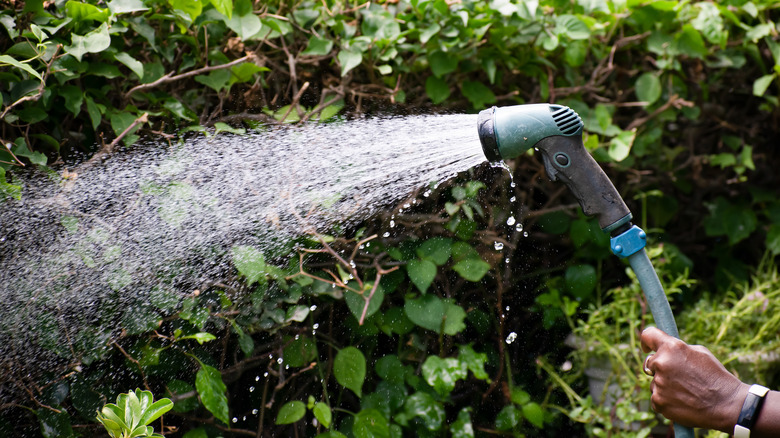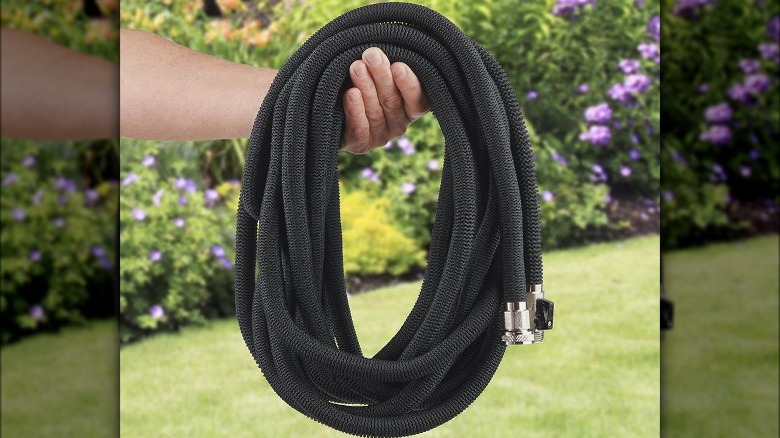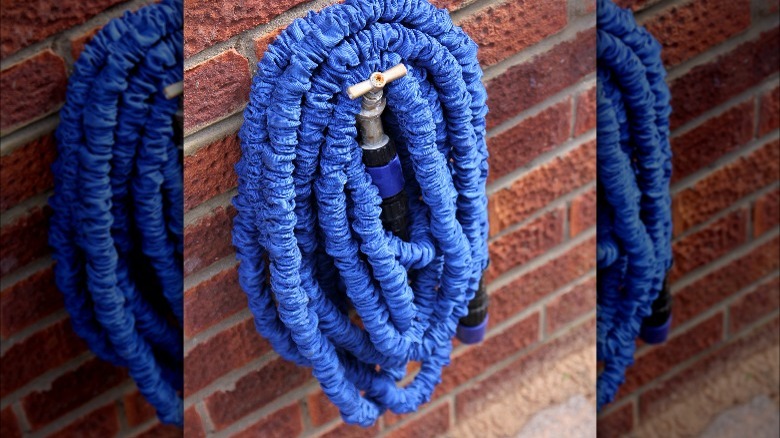Why You Should Invest In An Expandable Garden Hose
Supplying your garden, grass, and outdoor greenery with proper hydration becomes a laborious chore when you're lugging around a bulky garden hose. Traditional rubber hoses have served outdoor lovers well since the late 1800s, believe it or not, but at some point in its usage, it went from a helpful tool to a burdensome one. These hoses are not the most flexible, they kink quickly, and they're a pain to gather back up. Unless you're trying to multitask your watering duties and daily arm workout, it may be time to invest in an expandable garden hose.
An expandable hose differs greatly from a traditional or even retractable hose. With the two latter options, you'll have a fixed length and shape, though a retractable hose is capable of quickly returning to its storage unit. Expandable hoses, on the other hand, coil like a snake until it's filled with water. It'll expand at that point, doubling or even tripling in size, and then recoil on its own once the water pressure subsides. Such capabilities are only possible because of the lightweight and flexible material that makes up the hose. That flexibility also means no more kinks, while the lighter weight means nixing those incidental arm workouts.
Pros and cons of an expandable garden hose
Understanding the vast benefits of an expandable garden hose begins with an understanding of its parts. There are two layers involved: the inner tubing and the protective exterior. The inner tubing is often made of either latex or a compound called thermoplastic copolyester (TPC), both of which are incredibly elastic. A hose that measures 30 feet out of the box, for example, can expand to 90 feet or more once water fills the tube and you begin stretching it out. Turn the water off, and that 90-foot hose will return to its original size of 30 feet, making the storage process much faster and easier, too, since the hose will take up less room. Latex and TPC are also about five times lighter than a rubber hose.
The outer layer, meanwhile, is usually made of nylon or polyester, two other stretchy materials. It's there to protect against rocks, sticks, concrete, and other property findings that can tear through the inner tubing. Major damage is rare, but it can happen, especially if you opt for one that's made of cheaply produced materials. You'll also want to think twice about investing in an expandable hose if your home experiences poor water pressure. This tool relies on good pressure to expand and work properly.
Caring for an expandable hose
Both latex and TPC are fairly durable, yet neither can match the durability prowess of rubber. The outer layer will provide a good amount of protection, but a little extra effort on your part can extend the hose's lifetime even further. When watering your flower beds, for instance, uncoil the hose and place it as close to the bed as it will stretch before turning on the water valve. Then, let the hose expand fully before pulling the spray nozzle back. This will reduce the sudden impact of pressure and keep the hose from snaking across the hard ground. When you shut the water valve off, let the hose retract fully and then give it a squeeze to make sure no water is left inside the tube.
As with any garden hose, you'll want to avoid long periods of direct sunlight. Such intense heat will inevitably break down the inner compounds. Extreme cold can do the same, especially when ice or snow is involved. You'll want to detach the hose in these conditions or, at the very least, wrap it or cover it like you would an external faucet.


